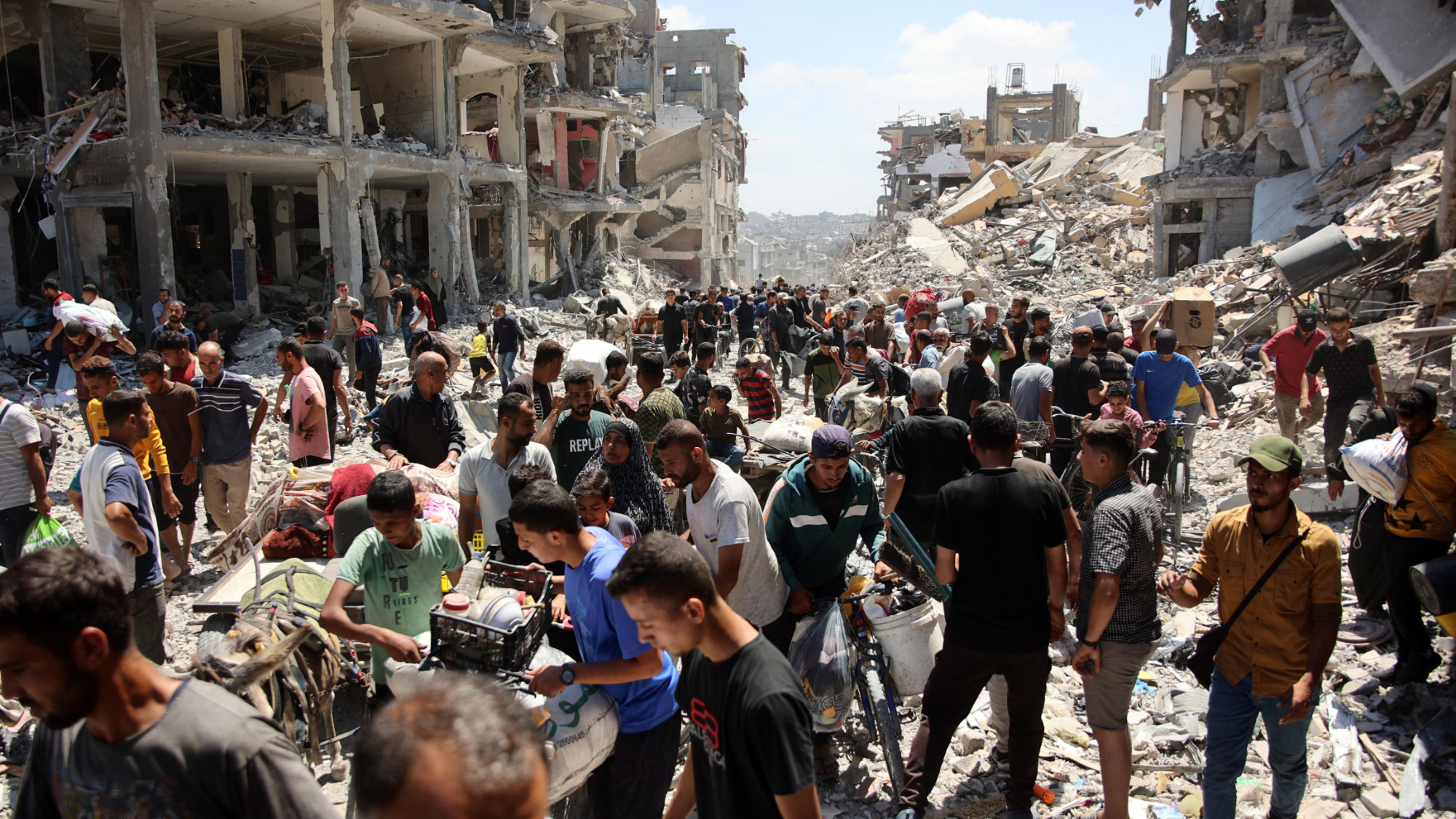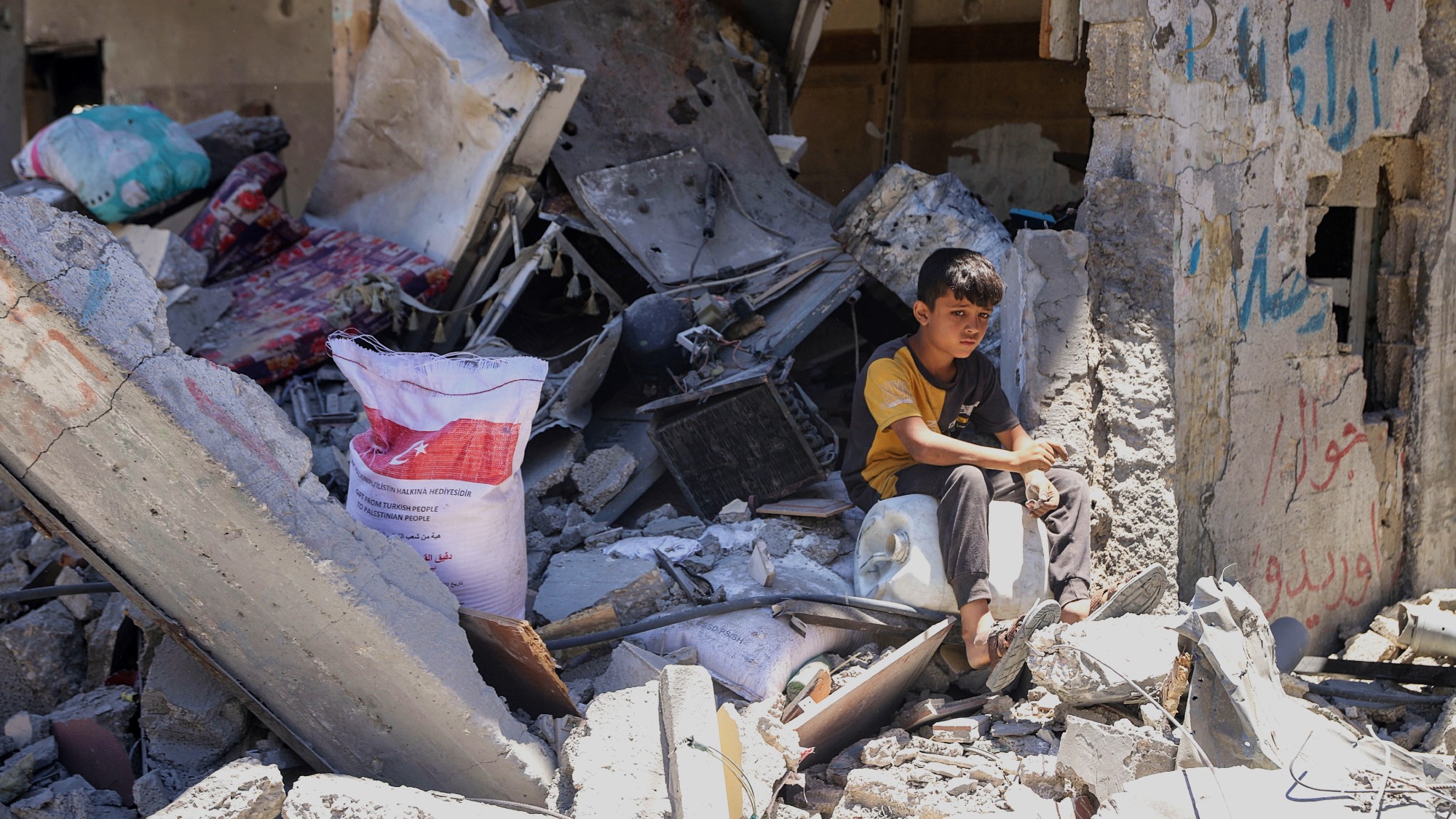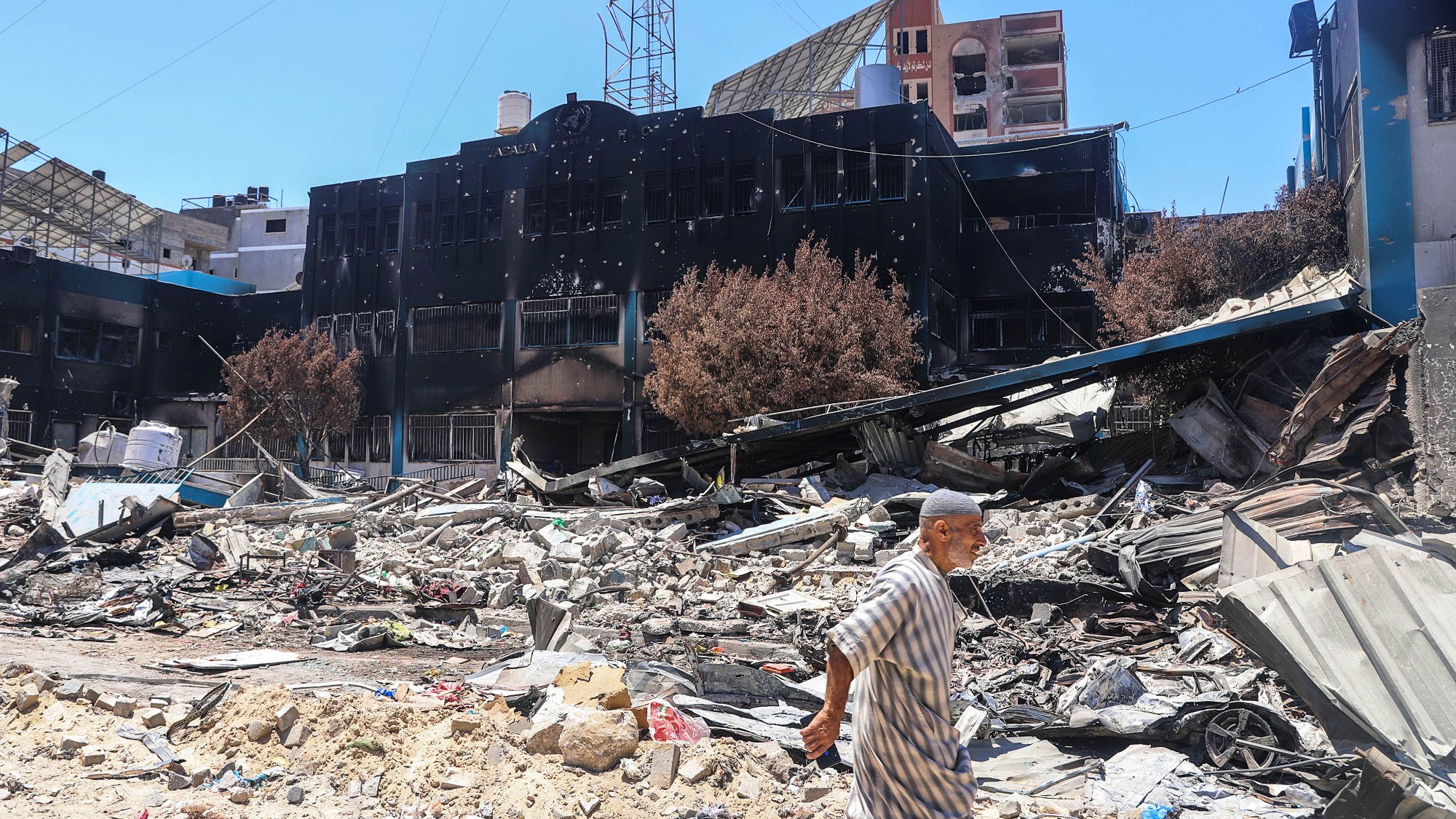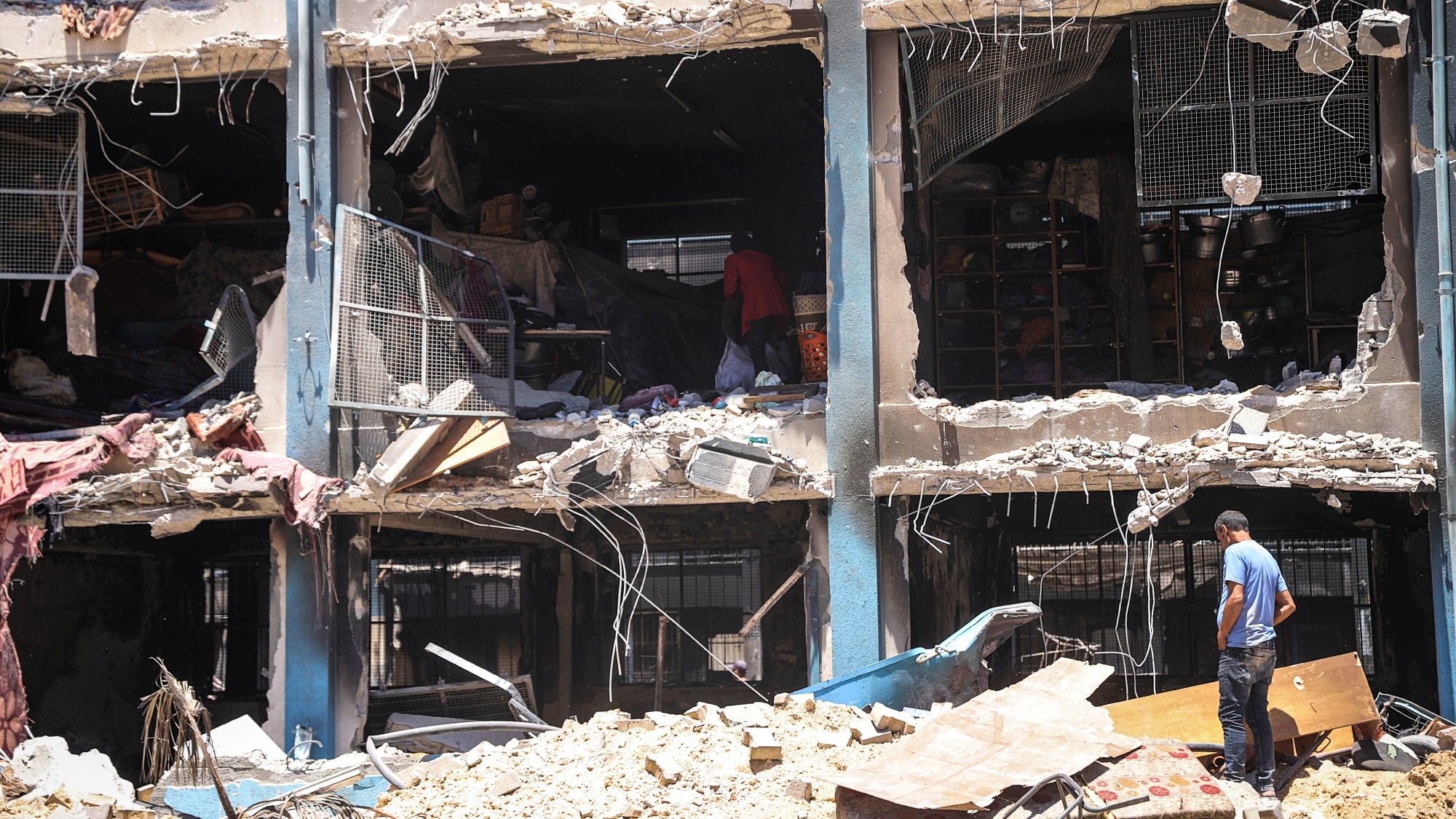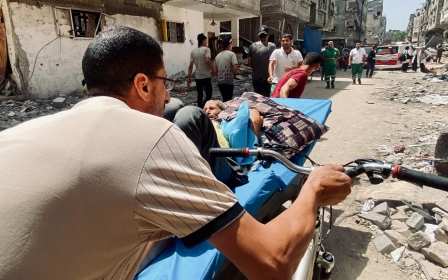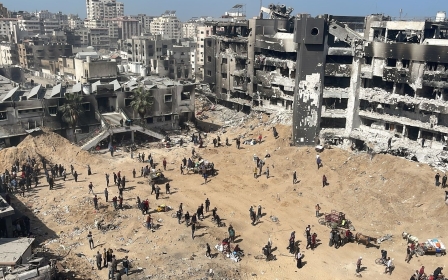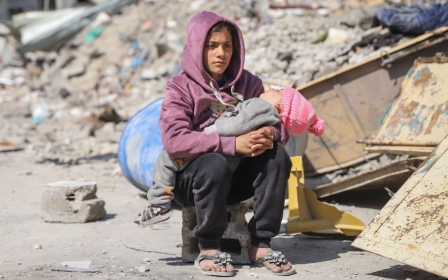War on Gaza: Jabalia left an 'unrecognisable' wasteland after Israeli assault
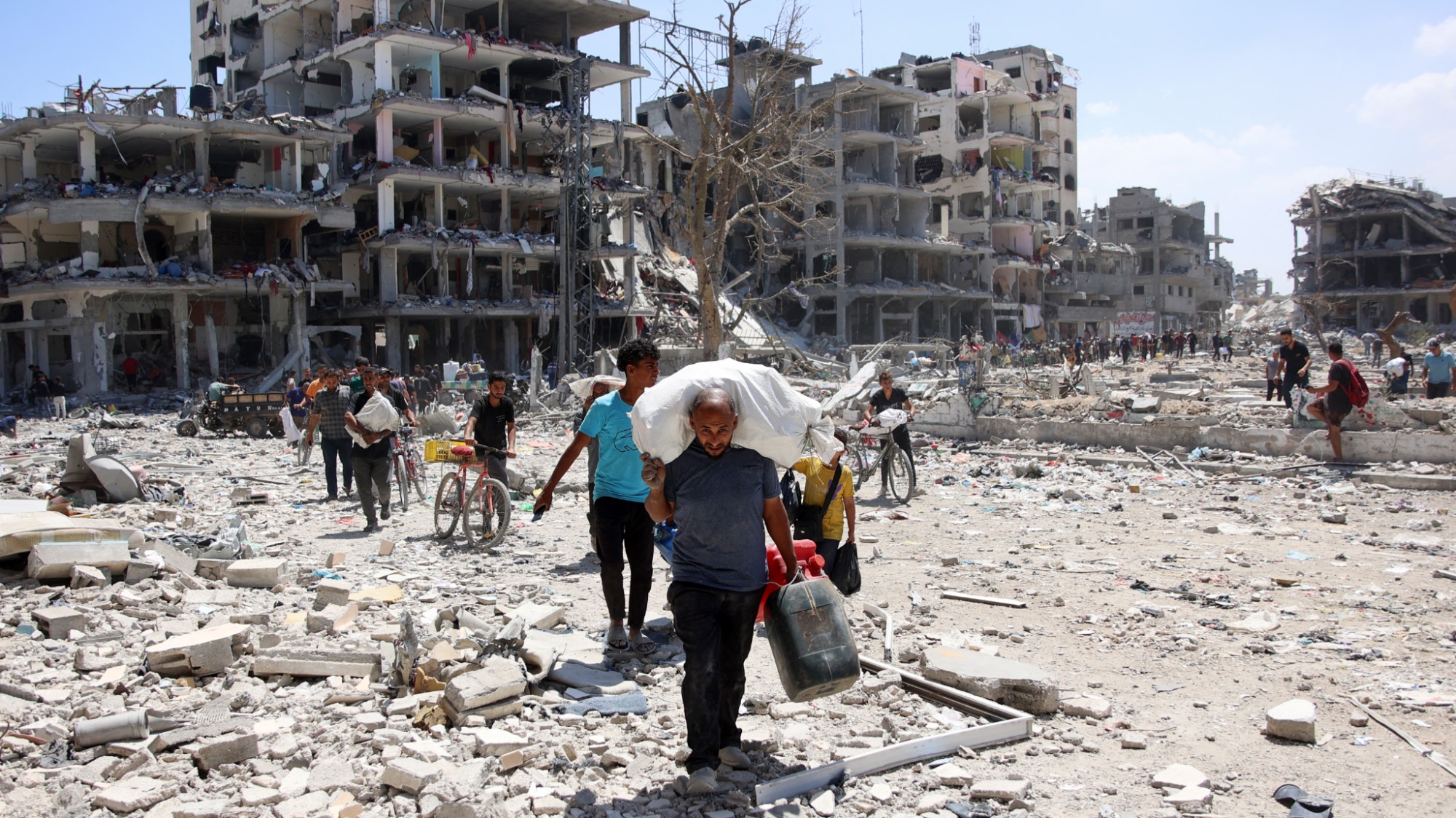
Piles of rubble and mounds of sand as far as the eye can see.
This is the view in Gaza’s Jabalia refugee camp following a 20-day Israeli assault, says Ibrahim Rabaa.
The camp resident fled his home earlier this month after the Israeli military launched a large-scale aerial and ground attack there.
For nearly three weeks, bombs rained down relentlessly on the densely populated area as tanks and troops advanced on the ground and laid siege to it.
On Friday, Israeli forces retreated from the whole of northern Gaza, including Jabalia, allowing displaced people like Rabaa to return.
New MEE newsletter: Jerusalem Dispatch
Sign up to get the latest insights and analysis on Israel-Palestine, alongside Turkey Unpacked and other MEE newsletters
What they returned to, however, was not Jabalia, he says. The place he has lived in all his life is now unidentifiable to him.
“Something out of the ordinary happened here,” Rabaa told Middle East Eye.
“They must have used different kinds of bombs. I’ve never seen destruction like this in any other area of Gaza.”
According to residents, survivors and local reporters, Israeli forces damaged almost everything in the Jabalia refugee camp. Entire neighbourhoods were wiped out, they say. Most homes are gone.
Basic infrastructure was destroyed, including all wells, the main sewage pump, utility poles and telephone lines.
The central open market was flattened, while the Fallujah cemetery was razed and bodies exhumed from it.
'My neighbourhood and home were unrecognisable to me'
- Ibrahim Rabaa, Jabalia resident
Other corpses of those killed in recent weeks were strewn on the streets, decomposing and covered only with blankets.
Two hospitals, raided by Israeli troops during the assault, were no longer functional. A vital UN clinic serving thousands of people was torched and the central police station lies in ruins. There is a street housing schools used as shelters that has been completely wrecked.
It’s a disaster area that is no longer suitable for human habitation, witnesses say.
“My neighbourhood and home were unrecognisable to me. Honest to God, I’m not exaggerating,” said Rabaa.
“We couldn’t tell which house belonged to whom. It’s unbelievable, utterly unbelievable.”
Homes and dreams
The latest ground and aerial assault on Jabalia came after seven months of Israeli bombardment that has battered much of the Gaza Strip.
The military heavily bombed Jabalia between October and November. One single strike on the camp killed at least 100 Palestinians and wounded hundreds more in one of the war’s deadliest attacks.
Despite the widespread destruction and threats by the Israeli army, most of Jabalia’s residents refused to flee their homes to southern Gaza, saying the displacement orders were a plot to ethnically cleanse the north of the Palestinian enclave.
Those who survived the early onslaught on the camp were then subjected to starvation amid an Israeli blockade on food and aid.
But nothing could prepare them for the amount of bombing they saw in the recent operation.
“There are no places where you can move with a car, bicycle or even an animal-drawn cart,” Abed Ali told MEE after the Israeli withdrawal.
“We walked on top of the debris and rubble of people’s homes and dreams.”
During the attack, the Palestinian civil defence search-and-rescue group said it received dozens of calls daily asking it to recover dead people and rescue the wounded.
However, the intensity of the bombing left them unable to access most areas. A death toll is not yet available, but rescue workers fear it will be high.
On Friday, first responders reached some areas in the camp for the first time in days and began recovering some of the corpses.
According to local reports, 70 bodies were found in the first few hours, including children.
Unrwa, the UN agency for Palestinian refugees, said on Friday that it had received "horrific reports" from their facilities in Jabalia in recent weeks.
Those include reports of displaced people, including children, being killed and wounded while sheltering in a UN school besieged by Israeli tanks.
Tents containing people sheltering at the school were "set on fire" by Israeli forces, the agency said, while other reports said Unrwa offices had been destroyed by air strikes and bulldozed by Israeli troops.
Mahmoud Basal, spokesperson of the civil defence, said initial estimates suggest around 1,000 houses have been destroyed.
According to Rabaa, even the manner in which homes were destroyed was bizarre.
Some buildings were flattened in air strikes. Those that remain standing are emptied from the inside, where blasts have punched holes in the walls and flung furniture out into the street.
'Life there is nonexistent. It will take years to revive'
- Abed Ali, Gaza City resident
Ali, a Gaza City resident, said the geography of the camp has been distorted.
Main roads have been razed, while new ones have been cut through people’s homes, likely to facilitate the movement of Israeli tanks.
“At the heart of the camp, the landmarks are completely changed,” he told MEE.
“Life there is nonexistent,” he added. “It will take years to revive life.”
However, many people say they will return to live in the camp and survive there for as long as they can.
“What can I do? Nothing is in my hands,” said Rabaa, who lost his father in an Israeli strike earlier in the war.
“All praise is due to God, we will remain steadfast and recite [the Quranic verse] 'with hardship comes ease'. I’ve entrusted my affairs with God.”
Intense battles
Jabalia is the largest of eight refugee camps in the Gaza Strip. Before the war, it housed over 116,000 people officially registered with Unrwa. The actual number of people in the camp is likely to be much higher.
Palestinian refugee camps like Jabalia's were established in 1948 to temporarily house families expelled from their homeland by Zionist militias in the war that created Israel, in an event known to Palestinians as the Nakba - or "catastrophe" in English.
With an area of 1.4 sq km, Jabalia is one of the most densely populated Unrwa camps.
It is historically known as a stronghold of Palestinian resistance groups and in 1987 was the birthplace of the first Palestinian Intifada.
In the first phase of Israel’s invasion of Gaza between October and December, the heart of Jabalia camp was one of few areas not penetrated by Israeli tanks due to fierce resistance from Hamas and other Palestinian groups present there.
The Israeli military claimed that it had cleared all of northern Gaza in December. Yet on 11 May, it sent a paratrooper division into the camp, again under the cover of aerial bombardment.
Some of the heaviest battles in Israel's war on Gaza have been recorded in the subsequent fighting, with Hamas inflicting daily Israeli casualties and damage to military vehicles.
The Israeli military and media described battles there as some of the most challenging yet.
According to an MEE tally based on military announcements, 17 soldiers and officers were killed in Jabalia and adjacent areas in May, including a soldier killed on Thursday. Many more were wounded, some seriously.
Hamas claimed that in one operation Palestinian fighters captured a group of Israeli soldiers in an ambush in a Jabalia tunnel complex.
The claim was denied by Israel, but Hamas’s al-Qassam Brigades later released a video showing fighters dragging a man inside a tunnel who appeared to be unconscious. He was pulled alongside military gear.
The video separately showed three semi-automatic rifles and other military gear that Hamas said were taken from the captured Israelis.
According to the Israeli military, one of its operations in Jabalia recovered the bodies of seven Israeli captives, who were found in a tunnel.
On Friday, the military said it had wrapped up the operation, in which 200 air strikes were carried out.
It claimed to have verified the killing of 350 Palestinian fighters, destroyed 12 km of tunnels and seized hundreds of weapons.
According to the Times of Israel, the military came under heavy fire by Hamas, including around 120 attacks from anti-tank missiles, dozens of “incidents of planted explosive devices, sniper fire and drones that dropped bombs”.
Meanwhile, the Israeli ground and aerial assault on Rafah has expanded to reach the heart of Gaza’s southernmost city.
The Israeli assault on Gaza, ongoing for nearly eight months, has killed more than 36,200 Palestinians and wounded 82,000, with 10,000 more missing and presumed dead and buried under rubble, according to health officials.
Around 70 percent of victims are children and women.
Middle East Eye delivers independent and unrivalled coverage and analysis of the Middle East, North Africa and beyond. To learn more about republishing this content and the associated fees, please fill out this form. More about MEE can be found here.


